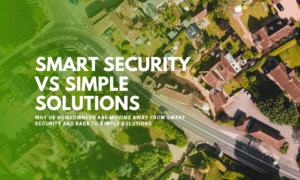Secure your organization with microsegmentation best practices
Ransomware attacks have become a significant threat, causing substantial disruptions and losses to businesses and organizations around the globe. They are appearing daily in the press and are on the minds of customers and C-Suite.
These attacks encrypt victims’ data, rendering it inaccessible, and demand a ransom for its release. As these threats evolve, traditional security measures are often insufficient, leading many organizations to turn to more advanced strategies like microsegmentation for cybersecurity protection.
Ransomware’s Rising Threat
In recent years, ransomware has surged, targeting businesses of all sizes and across various industries. These attacks are typically conducted by cybercriminals or hacking groups seeking financial gain. These attackers often target organizations or individuals, encrypting their data and demanding a ransom for its decryption. Some ransomware campaigns are orchestrated by organized crime syndicates, while others may have state-sponsored elements, particularly when targeting critical infrastructure or government entities. The perpetrators range from skilled individual attackers to sophisticated cybercriminal groups with advanced technical capabilities, continuously evolving their tactics to exploit vulnerabilities and maximize their illicit profits.
A global survey conducted in 2023 among cybersecurity experts found that the media, leisure, and entertainment sector experienced the most vulnerabilities exploited in ransomware attacks. The study also indicated that compromised credentials were the second most frequent cause of ransomware incidents across various industries, with malicious emails being the third leading contributor.
The cost of these attacks is not just the ransom itself but also the downtime, data loss, and reputational damage that can invariably occur. No one wants to be a headline for the wrong reasons.
Understanding Microsegmentation
Microsegmentation is a security approach that divides a network into smaller, distinct (or granular) segments and zones, each with its own set of access controls and security policies. Imagine your company’s network like a big house with many rooms. Microsegmentation is like putting unique locks on each room, so even if a burglar gets in, they can’t roam around freely. By implementing zero trust microsegmentation, organizations can limit the movement of a potential attacker within their network, thereby containing the attack and minimizing its impact. This is often described as “limiting the blast radius” of a breach.
How Microsegmentation Protects Against Ransomware
- Stopping Cyber Intruders in Their Tracks: One of the primary strategies of ransomware is to move laterally through a network, infecting as many systems as possible. Microsegmentation restricts this movement, acting like a series of roadblocks, effectively containing the spread of the ransomware.
- Custom-Fit Security: Microsegmentation allows businesses to apply tougher security where it’s most needed. Sensitive areas can have stricter controls, reducing the risk of a successful ransomware attack.
- Enhanced Visibility and Control: By breaking down the network into smaller segments, it’s easier to spot any suspicious activity. The visibility microsegmentation provides helps in early detection of unusual activities that could indicate a ransomware attempt.
- Reducing Attack Surface: With microsegmentation, there are fewer ways for attackers to get in. With fewer points of entry, the likelihood of a successful ransomware attack decreases dramatically.
- Compliance and Data Protection: For industries regulated by data protection laws, microsegmentation helps in ensuring compliance by protecting sensitive data from unauthorized access.
Best Practices for Implementing Microsegmentation for Ransomware Protection
- Know Your Network Inside Out: Before implementing microsegmentation for ransomware protection, it’s essential to have a comprehensive understanding of the network’s assets, workflows, and traffic patterns.
- Define Segmentation Policies Based on Data Sensitivity: Segments should be created based on the sensitivity of the data they contain, with more critical data receiving higher levels of protection.
- Continuous Monitoring and Adaptation: Implement continuous monitoring of the network and regularly adapt to new threats and changes in the network.
- Employee Training and Awareness: Educate employees about cybersecurity best practices, as human error can often lead to ransomware breaches.
- Integrate with Other Security Measures: Microsegmentation should be part of a broader cybersecurity strategy, integrated with other measures like firewalls, antivirus software, and intrusion detection systems.
Challenges in Implementing Microsegmentation
Implementing microsegmentation, while offering substantial cybersecurity benefits and being highly effective, presents several challenges that organizations must navigate and approach strategically:
- Complexity in Network Architecture: Microsegmentation requires a granular understanding of an organization’s network architecture. Organizations often face difficulties in mapping out the intricate interactions between various network segments. This complexity is amplified in dynamic environments, especially those involving cloud and hybrid infrastructures. A thorough and continuous analysis is essential to ensure that microsegmentation policies align with the network’s evolving nature.
- Policy Management and Enforcement: Cybersecurity teams must balance the need for tight security with the operational requirements of different business units. Overly restrictive policies might impede business operations, while lenient ones could leave the network vulnerable.
- Integration with Existing Security Systems: Integrating microsegmentation tools with existing security infrastructure is a significant challenge. Organizations often struggle to ensure compatibility between new microsegmentation solutions and their current security systems. Seamless integration is crucial to maintain a cohesive and effective security posture.
- Skillset and Knowledge Requirements: Implementing microsegmentation requires specialized knowledge and skills. Organizations may find a skills gap in their current IT teams, as microsegmentation is a specialized field. Investing in training or hiring experts will help bridge this gap.
- Cost Implications: The financial aspect of implementing microsegmentation is a significant consideration. The investment should cover the microsegmentation tools themselves but also the assessment and restructuring of the existing network architecture. Additionally, the integration of these tools with existing systems may necessitate upgrades or replacements of legacy equipment, further escalating costs.
- Ensuring Continuous Compliance: As microsegmentation involves creating numerous segments with distinct policies, continuous monitoring and adjustments are required to ensure that each segment adheres to relevant regulations.
The Future of Ransomware Protection
Ransomware attacks pose a serious threat to organizations globally, but by implementing microsegmentation, they can significantly improve their defenses. This strategy not only helps contain and minimize the impact of these attacks but also strengthens the overall security posture of an organization. As ransomware continues to evolve, adopting advanced security strategies like microsegmentation will be key to staying one step ahead of cybercriminals.
Author profile:

Nik Hewitt, Sr. Content Marketing Manager at TrueFort, the leading lateral movement protection platform, is a BAFTA-winning digital storyteller with nearly three decades of experience in digital content creation and IT/cybersecurity journalism. Now living in rural Ireland, he has worked with some of the world’s largest cybersecurity providers. Currently thriving with the team at TrueFort.com, Nik is a committed advocate for workplace equality and a champion for the use of AI in digital marketing. He can be reached online at www.linkedin.com/in/nikhewitt.



































